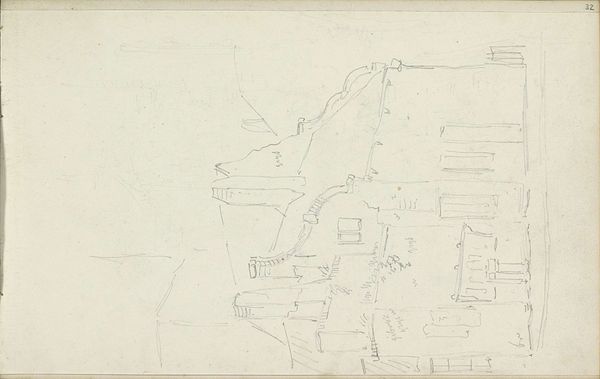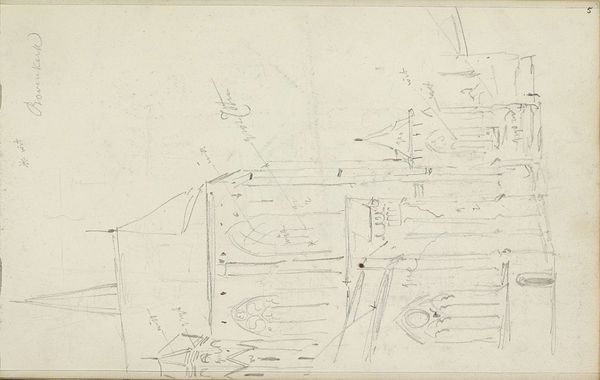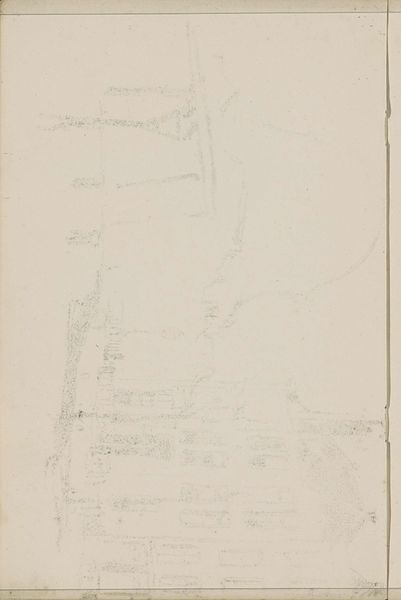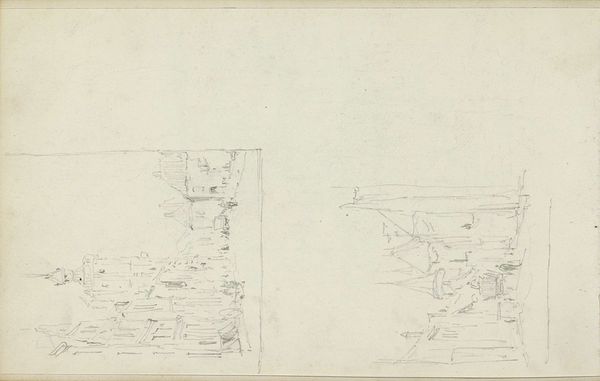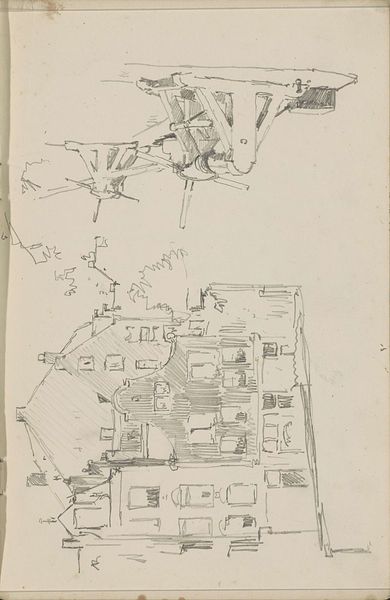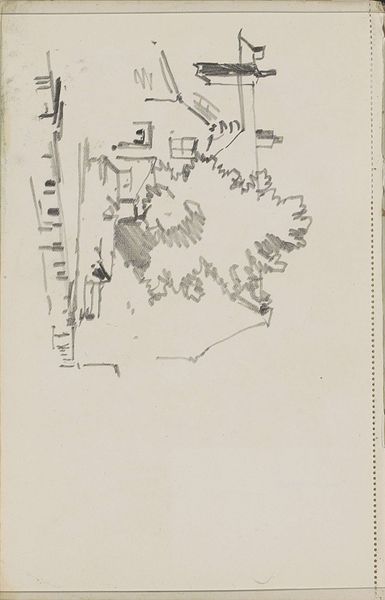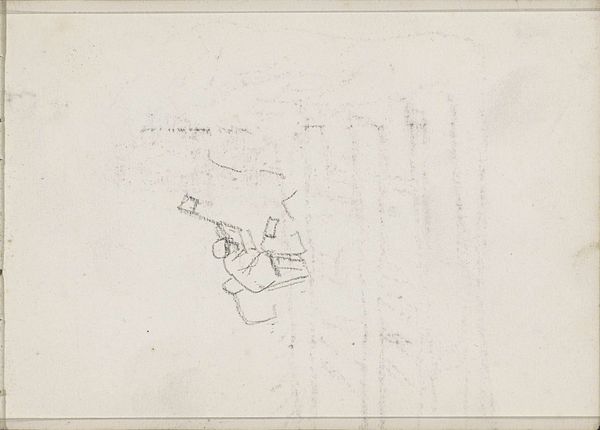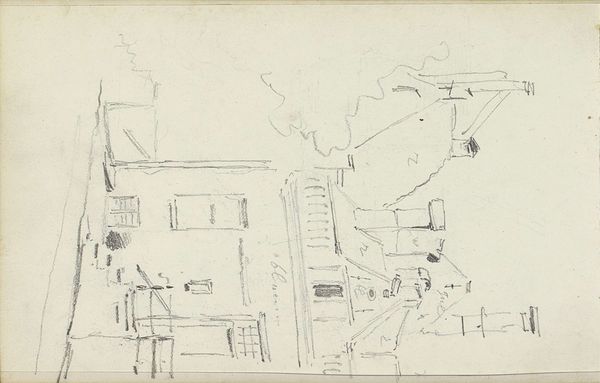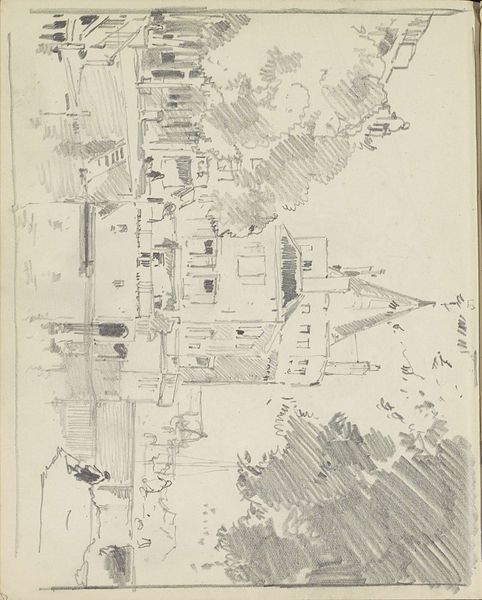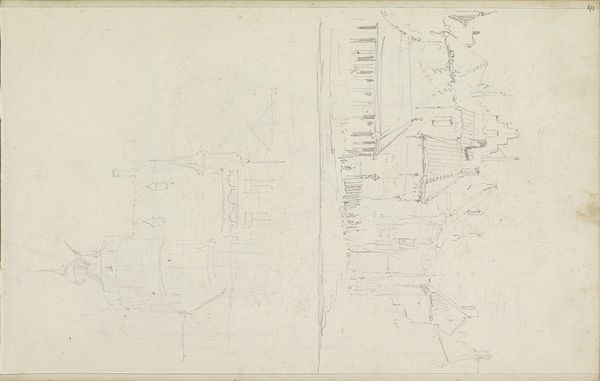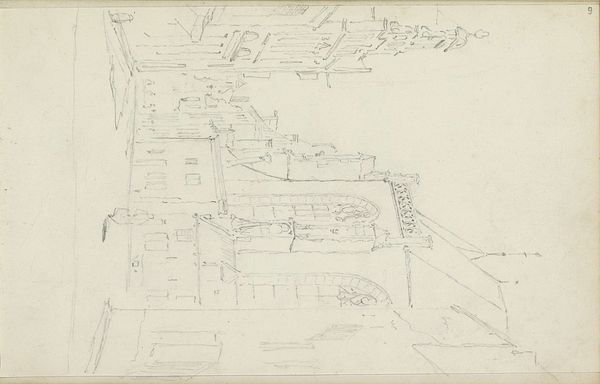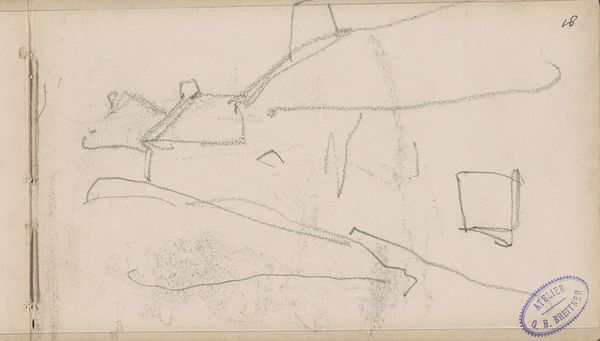
drawing, pencil
#
drawing
#
landscape
#
pencil
#
cityscape
#
street
Copyright: Rijks Museum: Open Domain
Editor: Here we have "Gezicht in Kampen met de Bovenkerk," which roughly translates to "View of Kampen with the Bovenkerk," attributed to Adrianus Eversen and created sometime between 1828 and 1897. It's a pencil drawing depicting what seems to be a cityscape. The sketchiness gives it a sort of ethereal, fleeting quality. What do you see in this piece, especially considering its medium? Curator: This work strikes me immediately by its demonstration of labor – the physical act of Eversen repeatedly applying graphite to paper. Each line represents a deliberate choice, a gesture that participates in a larger system of artistic production and, indeed, commerce. The relative speed and cheapness of pencil meant sketches could become studies for future works. I'd like to understand Eversen’s social position, did he teach art or was he only selling artworks? Editor: That’s an interesting point! The immediacy of the pencil certainly suggests a preparatory study rather than a finished work intended for display. Does the medium itself, being "just" pencil, affect its value or reception compared to, say, an oil painting of the same subject? Curator: Absolutely. Pencil drawings, particularly sketches, often blur the lines between "high art" and mere utility. In the 19th century, a time of growing industrialization and new forms of artistic production, a pencil drawing's value resided partly in its accessibility and reproducibility. Eversen is not only representing Kampen, but is also demonstrating a form of making art. What was the cultural attitude towards architectural drawings during this time? Editor: It sounds like understanding the social context surrounding artistic production is as crucial as appreciating the final image itself. Curator: Precisely! By examining the materials, the process, and the societal conditions surrounding Eversen's "Gezicht in Kampen," we gain a more complete understanding of the artwork’s significance. Did this approach shift your perspective? Editor: Definitely. I now view this less as a simple landscape and more as a document of a specific artistic practice and its place within a changing world. Thanks!
Comments
No comments
Be the first to comment and join the conversation on the ultimate creative platform.
